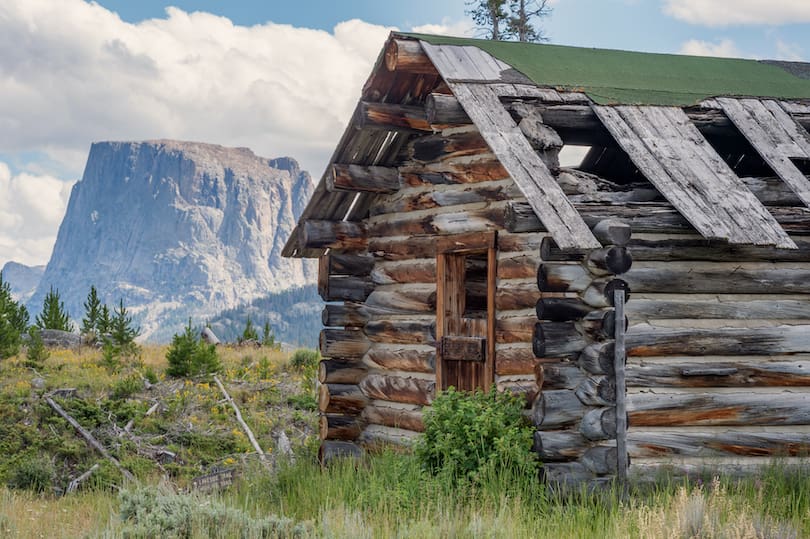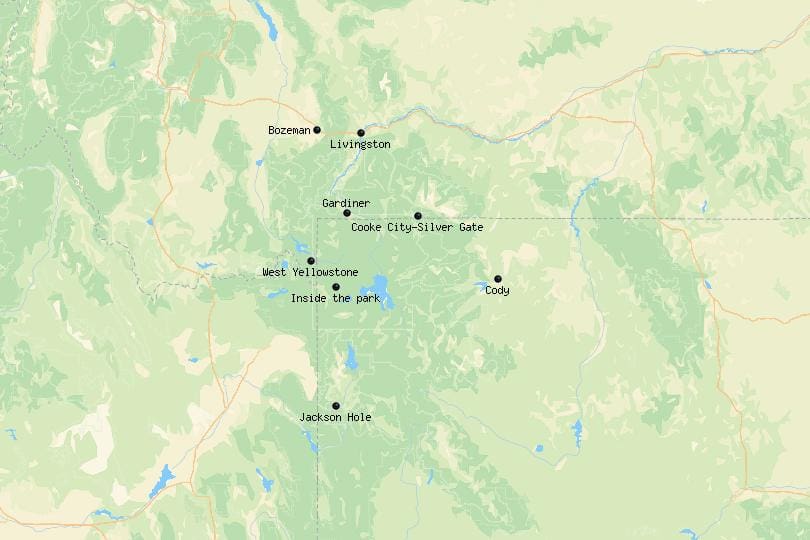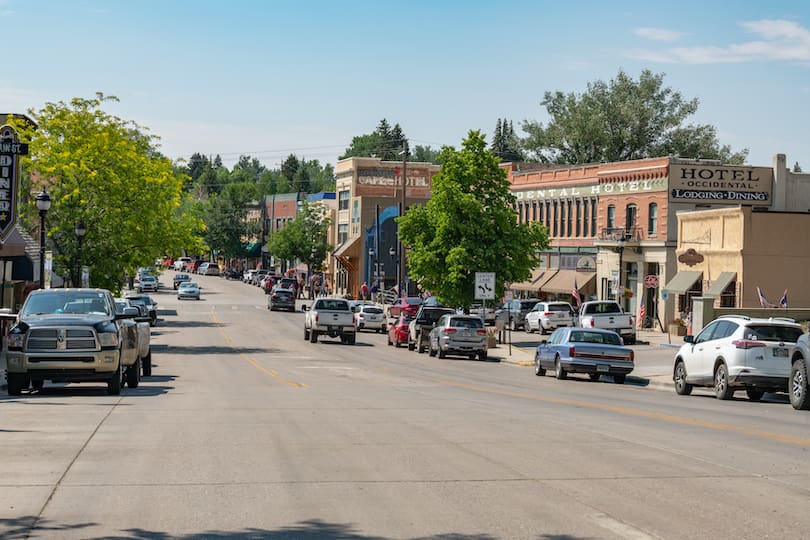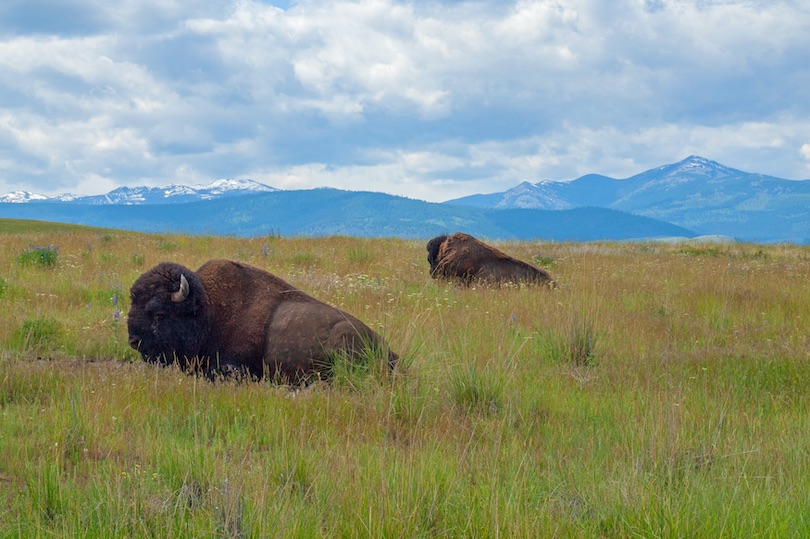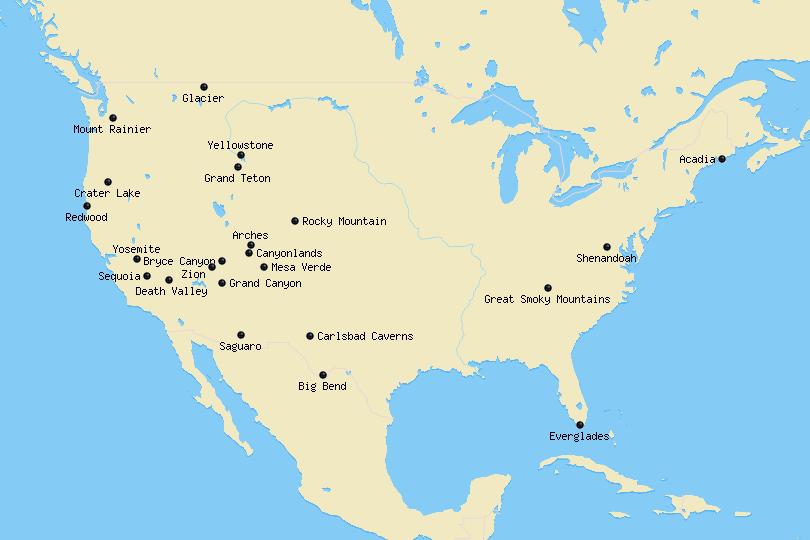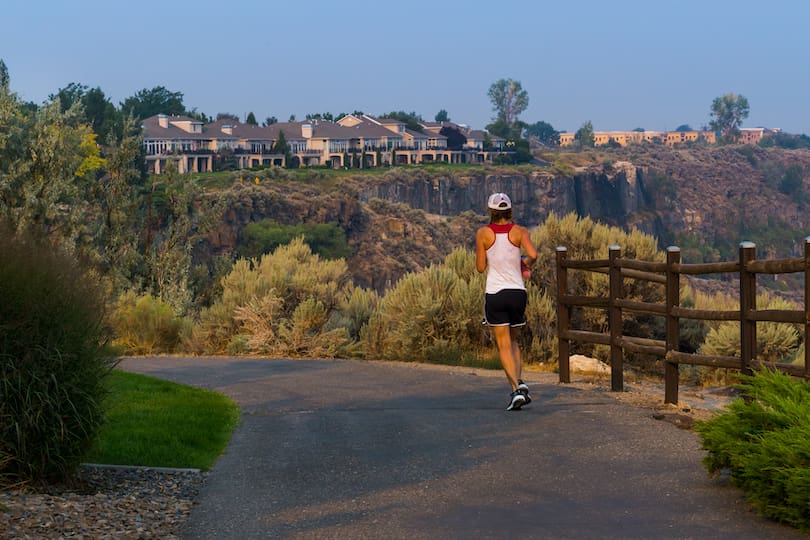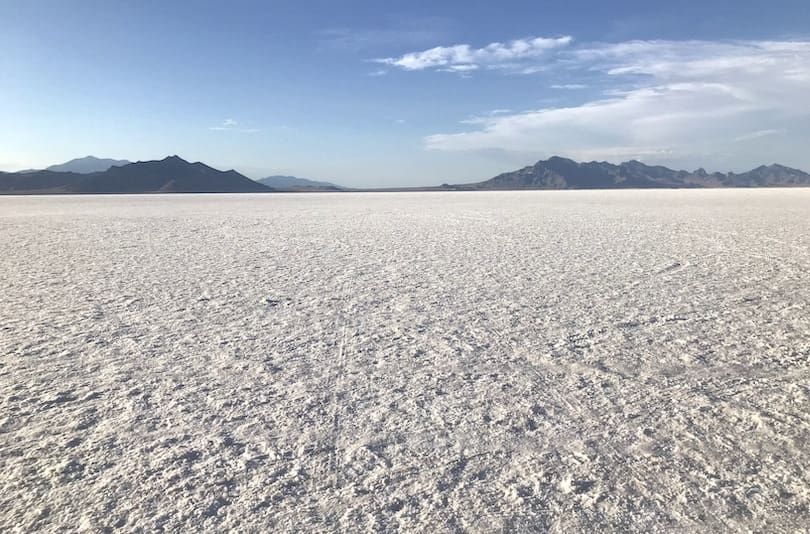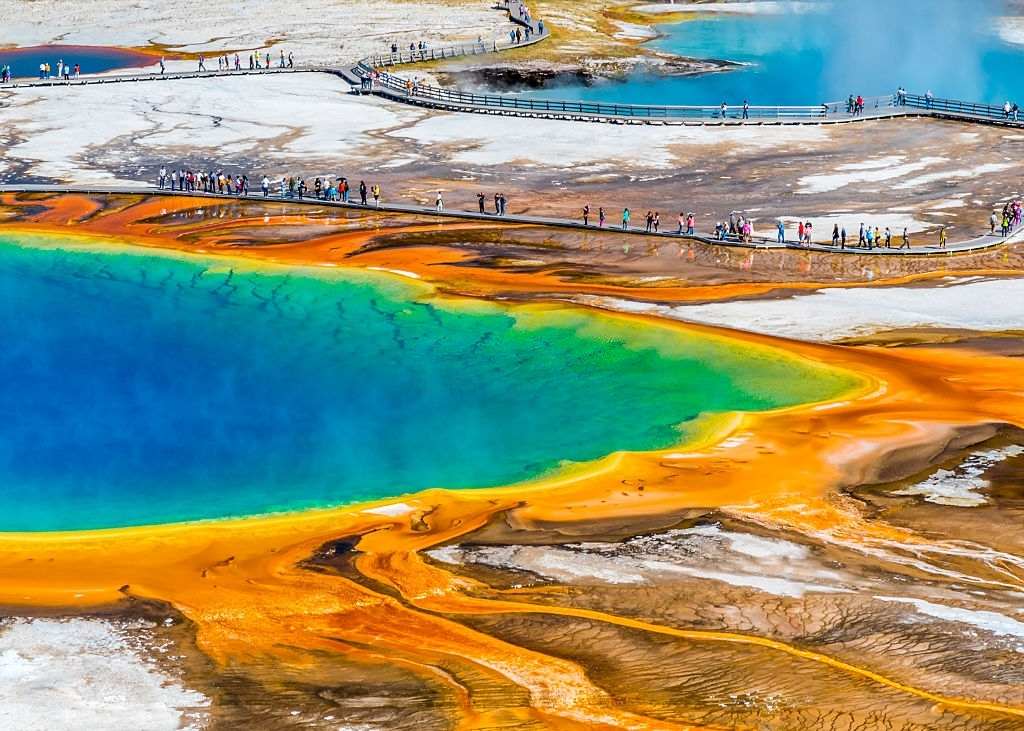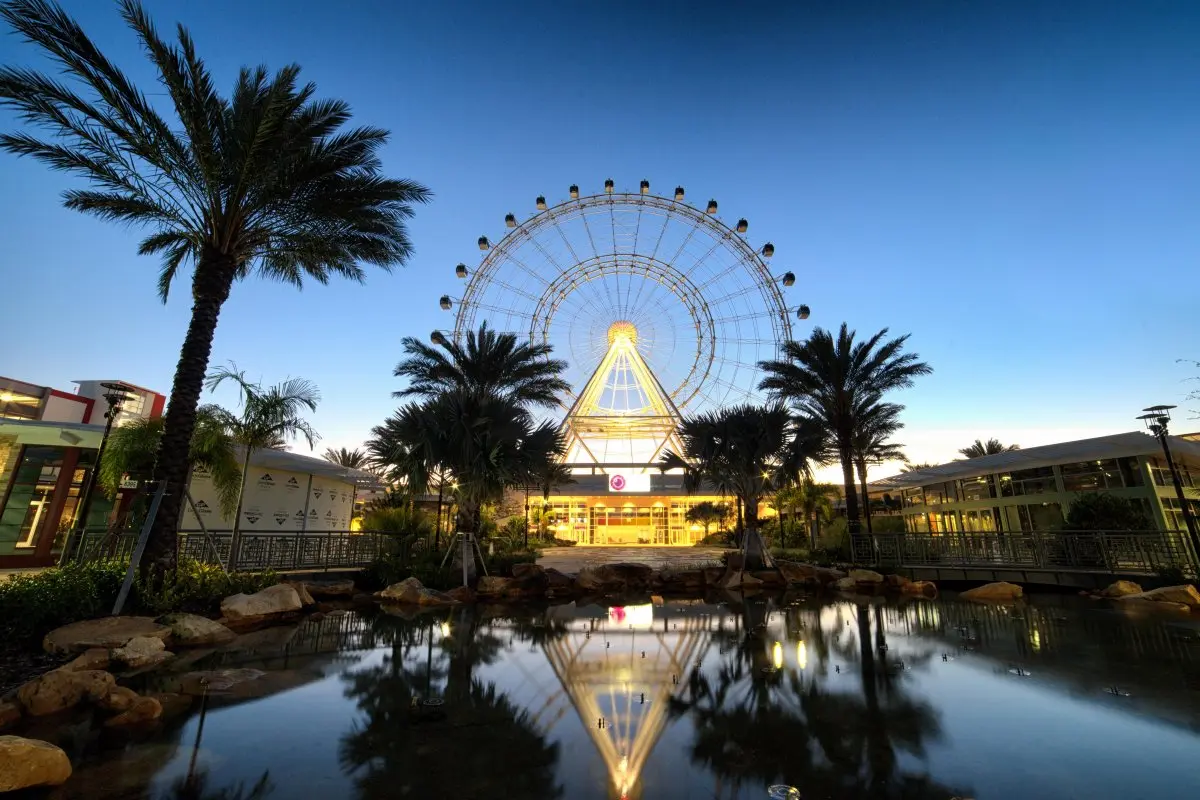Wyoming, known as the Cowboy State, is one of the most picturesque and rugged destinations in the United States. From towering mountain ranges to expansive deserts and lush national parks, Wyoming offers travelers an incredible array of outdoor adventures, historical experiences, and natural beauty. This article covers 23 of the best things to do in Wyoming, offering a perfect blend of adventure, culture, history, and stunning landscapes.
1. Discover Yellowstone National Park
Yellowstone National Park is one of the most iconic and expansive natural treasures in the world, spanning over 3,400 square miles of geothermal wonders, wildlife habitats, and rugged landscapes. Established in 1872, it was the first national park in history and has remained a beacon for nature lovers, scientists, and adventurers alike.
Geothermal Features:
Yellowstone is home to over half of the world’s geothermal features. The park’s most famous attraction, Old Faithful Geyser, erupts at regular intervals, shooting water up to 180 feet into the air. The Grand Prismatic Spring is another stunning sight, renowned for its vibrant colors formed by heat-loving bacteria. The Yellowstone Canyon features dramatic waterfalls and canyons carved by the Yellowstone River, offering breathtaking views.
Wildlife Watching:
Yellowstone is also a wildlife haven, with large populations of bison, elk, wolves, and grizzly bears. The Lamar Valley is considered the “Serengeti of North America” due to its incredible wildlife sightings, while Hayden Valley offers expansive views where you can observe animals grazing, playing, and hunting. This makes it a fantastic destination for photographers and nature enthusiasts.
Year-Round Adventures:
In the warmer months, visitors enjoy hiking, fishing, camping, and scenic drives, such as the Grand Loop Road, which provides access to major attractions. In winter, the park transforms into a snowy wonderland, with opportunities for snowshoeing, cross-country skiing, and snowmobile tours.
2. Hike in Grand Teton National Park
Located south of Yellowstone, Grand Teton National Park is renowned for its striking, rugged mountain peaks that rise sharply above the Jackson Hole valley. The park is a paradise for hikers, offering more than 200 miles of trails that take you through forests, alpine meadows, and past sparkling lakes. The Teton Range is famous for its steep cliffs, glaciers, and dramatic vistas.
Popular Hikes:
- Jenny Lake Loop: This easy hike is perfect for those wanting a peaceful walk with stunning views of Jenny Lake and the towering peaks.
- Cascade Canyon Trail: A moderate to strenuous hike, this trail offers breathtaking views of alpine lakes, jagged peaks, and lush valleys. It’s one of the best spots to experience the full grandeur of the Teton Range.
- Grand Teton Summit: For the seasoned hiker, climbing the Grand Teton itself offers stunning panoramic views from one of the most majestic summits in the U.S.
In winter, Grand Teton becomes a hub for cross-country skiing, snowshoeing, and ice climbing, with several routes designed for winter sports enthusiasts.
3. Stroll Through Jackson Hole
Nestled between the Teton Range and Snake River, Jackson Hole is a charming, quintessential western town that captures the spirit of the American frontier. The town is famous for its Old West architecture, iconic antler arches, and proximity to both Grand Teton and Yellowstone National Parks.
Highlights of Jackson Hole:
- Jackson Town Square: The heart of the town, featuring the four antler arches that make for excellent photo ops.
- National Museum of Wildlife Art: Perched above the town, this museum houses over 5,000 works of art, showcasing wildlife-themed art from American artists and beyond. The museum’s setting offers sweeping views of the National Elk Refuge.
- Historical Sites: Jackson Hole has a rich cowboy heritage, reflected in historic buildings such as the Cowboy Bar and National Elk Refuge.
The town also boasts a vibrant arts scene, with galleries, live performances, and festivals throughout the year.
4. Visit Devils Tower National Monument
Devils Tower is one of Wyoming’s most iconic landmarks and holds cultural and spiritual significance for Native American tribes. Towering 867 feet above the surrounding plains, this monolithic structure was designated the first national monument by Theodore Roosevelt in 1906.
Activities at Devils Tower:
- Tower Trail: A circular trail that takes visitors around the base of the tower, offering incredible close-up views of the rock formation and surrounding wildlife such as mule deer, bighorn sheep, and prairie dogs.
- Rock Climbing: Devils Tower is one of the most challenging and iconic climbing spots in the U.S., attracting climbers from around the world.
- Visitor Center and Programs: The visitor center provides educational exhibits on the history and geology of the tower, as well as cultural programs related to Native American traditions.
5. Relive History at Fort Laramie
Fort Laramie National Historic Site offers visitors a chance to immerse themselves in Wyoming’s pioneering past. Originally established as a trading post in the 1830s, the fort became an essential military outpost during the Indian Wars and was a key stop along the Oregon Trail.
Things to Explore:
- Restored Buildings: Explore the commanding officer’s quarters, barracks, officers’ mess hall, and other restored structures that transport visitors back to the days of westward expansion.
- Historical Programs and Exhibits: The fort offers interactive exhibits and programs that delve into its role in the Indian Wars, the Oregon Trail, and the interactions between settlers and Native Americans.
6. Explore the Wyoming Dinosaur Center
The Wyoming Dinosaur Center, located in Thermopolis, is home to one of the largest collections of dinosaur fossils in the world. With over 50,000 fossils, the museum offers visitors a deep dive into the prehistoric past.
Key Experiences:
- Fossil Exhibits: The museum’s exhibits feature dinosaur skeletons of creatures like Allosaurus, Stegosaurus, and Triceratops, among many others.
- Hands-On Fossil Preparation: Visitors can engage with paleontologists and watch them work on real dinosaur fossils in the center’s fossil prep lab.
- Dinosaur Dig Tours: For a truly immersive experience, sign up for a dinosaur dig tour, where you can join paleontologists on real fossil hunts in nearby dig sites.
7. Witness the Beauty of Bighorn Mountains
The Bighorn Mountains are one of Wyoming’s best-kept secrets, offering outdoor enthusiasts a diverse range of activities in an incredibly scenic setting.
Things to Do:
- Hiking and Backpacking: The Bighorns feature over 1,000 miles of trails, ranging from easy walks to more challenging backcountry adventures. The Bighorn Scenic Byway is particularly popular for its scenic vistas, waterfalls, and wildlife sightings.
- Camping and Fishing: With numerous campgrounds and pristine lakes, the area is perfect for camping, fishing, and boating. The Tongue River Reservoir is a popular fishing spot, home to species like rainbow trout and walleye.
- Wildlife Watching: Keep an eye out for wildlife such as elk, pronghorn antelope, and bighorn sheep, all of which can be spotted along the scenic drives and hiking trails.
8. Take a Scenic Drive on Beartooth Highway
The Beartooth Highway, one of the most scenic drives in the U.S., spans 68 miles across Wyoming and Montana, offering dramatic views of the Beartooth Mountains, alpine lakes, and expansive meadows. The highway’s high-altitude path offers vistas that stretch for miles, providing photo opportunities at every turn.
Beartooth Highway Highlights:
- Beartooth Pass: The highest point on the highway at 10,947 feet, this summit offers unparalleled views of the surrounding wilderness.
- Panoramic Vistas: Along the route, you can pull over at various viewpoints to capture breathtaking photographs of the jagged peaks, glaciers, and pristine landscapes.
- Wildlife and Flora: The highway is home to diverse wildlife, including bears, elk, and mountain goats. Visitors will also pass by colorful wildflowers during the summer months.
9. Enjoy Hot Springs State Park
Wyoming’s Hot Springs State Park, located in Thermopolis, is home to one of the most iconic natural hot springs in the state. The hot springs, rich in minerals, have been revered for their therapeutic qualities for centuries. The Tepee Fountain, an impressive geothermal feature, allows visitors to witness natural hot springs bubbling up through the stone. A key highlight of the park is the state-owned bathhouse, where visitors can soak in the spring-fed pools. The waters maintain a consistent temperature year-round, perfect for relaxation, as they range from a comfortable 100°F to 104°F. In addition to the bathhouse, the park offers a free outdoor mineral pool, which is open year-round and offers great views of the nearby cliffs.
Hiking Trails & Scenic Views: For those who prefer to stretch their legs after a soak, the park has several scenic hiking trails that lead through the surrounding sandstone bluffs, providing picturesque views of the Bighorn River and the town of Thermopolis. The Big Spring Scenic Trail offers a peaceful, 2-mile walk with interpretive signs along the way. Additionally, the Wildlife Viewing Area is another popular spot where visitors can see various species of birds, bison, and other local wildlife.
The park is an excellent spot for families, offering a picnic area where you can enjoy a meal surrounded by nature. Hot Springs State Park is not only a great place for relaxation but also for exploring the surrounding beauty, making it a must-visit when in Wyoming.
10. Attend the Cheyenne Frontier Days Rodeo
Cheyenne Frontier Days is one of Wyoming’s most famous events, drawing thousands of visitors from around the world. Held every summer in Cheyenne, this annual celebration of the American West is the largest outdoor rodeo in the world. The rodeo lasts for 10 days and features exciting events such as bull riding, bronco busting, and barrel racing, where professional riders show off their skills in front of a packed stadium. For rodeo enthusiasts, this is the ultimate event to experience the thrill of the sport.
Cultural Festivities & Attractions: Beyond the rodeo, Cheyenne Frontier Days is a full-fledged festival. Visitors can enjoy live country music concerts, showcasing some of the biggest names in country music, parades, and a carnival featuring rides and games for the whole family. A huge part of the experience is the chance to witness western cowboy culture firsthand, including Native American dances, artisans, and traditional food stalls serving up classic dishes like barbecued meats and sourdough pancakes.
For those interested in more rodeo-related events, there are wild west shows and stagecoach rides, providing a nostalgic look at the old days of the frontier. Cheyenne Frontier Days truly encapsulates Wyoming’s cowboy spirit, and if you’re in the state during the summer, it’s a cultural experience you won’t want to miss.
11. Visit the Buffalo Bill Center of the West
Located in the historical town of Cody, the Buffalo Bill Center of the West is a museum complex dedicated to celebrating the history, art, and culture of the American West. The center comprises five museums, each offering a unique perspective on the western frontier and its iconic figures.
Buffalo Bill Museum: This museum is dedicated to William F. “Buffalo Bill” Cody, one of the most famous figures of the American West. Learn about his colorful life, from his early days as a scout and showman to his creation of the Wild West Show, which entertained audiences across the world.
Whitney Western Art Museum: This museum houses an impressive collection of Western-themed art, showcasing works by renowned artists such as Frederic Remington, Charles Russell, and Thomas Moran. The museum provides a deeper understanding of the role art played in shaping perceptions of the American West.
Other Museums: The Cody Firearms Museum displays the history of firearms in America, while the Plains Indian Museum focuses on the Native American tribes of the Great Plains, and the Draper Natural History Museum explores the natural environment of the Rocky Mountain region, with exhibits on geology, ecology, and wildlife.
Whether you’re a history enthusiast or an art lover, the Buffalo Bill Center of the West offers a comprehensive and immersive look into the heart of Wyoming and the legacy of the American West.
12. Stargaze at Medicine Bow National Forest
Wyoming’s Medicine Bow National Forest offers some of the clearest, most pristine skies in the U.S., making it a premier destination for stargazing. The forest, located in southern Wyoming, is far from the lights of urban centers, providing visitors with an incredible view of the night sky.
Arapaho Glacier Trailhead: One of the best places to stargaze in the forest is the Arapaho Glacier trailhead. This remote area is perfect for camping under the stars, as the high-altitude location offers minimal light pollution. As night falls, the sky comes alive with thousands of stars, and on clear nights, visitors can view planets, meteors, and constellations.
Peace and Quiet: This forest is also an excellent place for a peaceful retreat. The solitude offered here is ideal for those who wish to enjoy the tranquility of nature while marveling at the cosmos. It’s not just a stargazing location, but a serene escape into nature’s beauty.
Wildlife and Hiking: During the day, the forest offers a range of hiking trails, including routes that pass through alpine meadows and forests, with opportunities to see wildlife such as deer, elk, and eagles. Medicine Bow National Forest is a perfect blend of outdoor adventure and celestial beauty, ideal for stargazers, nature lovers, and outdoor enthusiasts alike.
13. Experience Wildlife at the National Elk Refuge
The National Elk Refuge is a wildlife sanctuary located just north of Jackson, and it’s one of the best places to witness the majesty of elk and other animals in their natural habitat. The refuge spans 25,000 acres and is home to one of the largest herds of elk in North America.
Sleigh Rides: In winter, the best way to experience the refuge is by taking a sleigh ride. The rides are drawn by horses and offer a comfortable, up-close look at the elk, which gather on the refuge to avoid the harsh winter conditions of the surrounding mountains. These sleigh rides provide a unique opportunity to observe the elk as they graze in their natural habitat.
Other Wildlife: Aside from elk, the refuge is home to other species like moose, bison, waterfowl, and various migratory bird species. Birdwatching is especially popular, with the refuge providing a haven for over 200 species of birds during migration periods.
Photography & Nature Walks: The National Elk Refuge also offers excellent photography opportunities, with its dramatic backdrop of the Tetons and diverse wildlife. The area is accessible year-round and offers seasonal activities like wildlife viewing, nature walks, and cross-country skiing in winter.
14. Visit the Wind River Reservation
The Wind River Reservation, located in central Wyoming, is home to the Eastern Shoshone and Northern Arapaho tribes. The reservation offers visitors a chance to explore the culture and history of these Native American communities, making it a valuable destination for cultural tourism.
Cultural Centers and Powwows: Visitors can visit the Wind River Tribal Heritage Center, where they can learn about the history, art, and traditions of the Shoshone and Arapaho tribes. The center hosts art exhibits, traditional craft demonstrations, and provides insight into the indigenous way of life. The reservation also hosts powwows throughout the year, where visitors can witness traditional dances, music, and vibrant regalia.
Scenic Views: The Wind River Range offers breathtaking views and outdoor activities such as hiking, camping, and fishing. The area is rich in cultural and natural beauty, making it an ideal destination for those interested in history and outdoor recreation.
15. Go Fishing in Flaming Gorge Reservoir
Located in the southwest corner of Wyoming, Flaming Gorge Reservoir is one of the state’s top fishing destinations. The crystal-clear waters are home to a wide variety of fish, including rainbow trout, lake trout, and smallmouth bass, making it a paradise for anglers.
Scenic Views & Outdoor Recreation: The surrounding area is just as breathtaking, with red rock cliffs and forests providing a stunning backdrop for fishing. The Flaming Gorge Scenic Byway offers some of the best panoramic views of the reservoir and the surrounding wilderness. In addition to fishing, the reservoir is perfect for boating, kayaking, and paddleboarding.
Wildlife Watching: Visitors can also explore the Flaming Gorge National Recreation Area to observe wildlife, including bald eagles, wild turkeys, and pronghorn antelope. Whether you’re an angler or just looking to enjoy the natural beauty, Flaming Gorge Reservoir offers plenty of opportunities for relaxation and recreation.
16. Hike to Hidden Falls
Tucked in the Grand Teton National Park, Hidden Falls is one of the most popular and scenic hiking destinations. Located near Jenny Lake, the falls are easily accessible through a short, well-maintained trail. The path offers incredible views of the surrounding mountains and wildflower meadows.
Waterfall Views: The waterfall cascades dramatically over a cliff, creating a serene and picturesque atmosphere, especially during the spring when the meltwater makes the falls even more powerful. Hidden Falls is the perfect spot to sit and enjoy the tranquility of nature while being surrounded by towering granite cliffs and lush greenery.
Nearby Activities: After visiting the falls, you can take a boat ride across Jenny Lake or explore additional trails in the surrounding area, including the challenging Cascade Canyon Trail for a longer hike.
17. Explore Fossil Butte National Monument
Located near the town of Kemmerer, Fossil Butte National Monument is one of the premier paleontological sites in the world. This stunning area offers a unique glimpse into life during the Eocene Epoch, approximately 50 million years ago. Fossils found here include a variety of prehistoric creatures such as fish, birds, reptiles, and plants, giving scientists valuable insight into life in the ancient world. The site is especially known for its extraordinary preservation of fish fossils, some of which are considered the best-preserved fossilized fish in the world.
The Fossil Butte area consists of striking buttes and hills, where fossil beds are exposed, making it an incredible destination for paleontology enthusiasts and tourists alike. Visitors can explore the area via well-marked hiking trails that lead to active fossil sites, where they may see layers of ancient sediments that have preserved fossils for millions of years. The Fossil Butte Visitor Center offers educational exhibits showcasing the diverse fossils discovered in the monument, along with interactive displays about the prehistoric ecosystems that existed here. The museum also provides detailed information about the excavation process and the importance of fossil preservation.
For those interested in a more hands-on experience, the center offers fossil-digging programs where visitors can try their hand at unearthing fossils under the guidance of experts. The monument also features an informative self-guided tour and stunning views of the surrounding high desert and mountain ranges.
18. Snap Photos at Wyoming’s Red Desert
The Red Desert is one of Wyoming’s most surreal and photogenic landscapes. This vast, rugged region is filled with rolling sand dunes, breathtaking rock formations, and ancient petroglyphs, providing a picturesque setting for photographers, nature lovers, and explorers. The desert is known for its vibrant red-hued rocks and cliffs, which are especially stunning at sunrise and sunset, when the landscape comes alive with golden and crimson hues.
One of the most iconic areas within the Red Desert is Flaming Gorge, a stunning canyon carved by the Green River. The rich red, orange, and purple rock formations of the gorge contrast beautifully with the blue waters below, creating an awe-inspiring scene for those lucky enough to visit. The desert’s expansive, open spaces and minimal light pollution make it an excellent destination for stargazing. On clear nights, visitors can enjoy unspoiled views of the Milky Way and various constellations.
In addition to hiking and photography, the desert is an excellent place for wildlife spotting. Animals such as pronghorn antelope, mule deer, wild horses, and various bird species call this landscape home. There are also historic petroglyphs carved by ancient Native American tribes, which provide fascinating insights into the area’s human history. Whether you’re seeking outdoor adventure or simply looking to capture the magic of this unique desert landscape, Wyoming’s Red Desert offers plenty of opportunities to experience nature’s raw beauty.
19. Raft Down the Snake River
The Snake River is one of Wyoming’s most popular outdoor recreation destinations, offering exciting white-water rafting experiences in some of the state’s most stunning landscapes. The river meanders through Grand Teton National Park and Jackson Hole, providing adventurers with the opportunity to explore rugged canyons, alpine forests, and open meadows while navigating rapids of various difficulty levels.
For those seeking an adrenaline rush, the white-water rapids near Jackson Hole and Snake River Canyon provide an exhilarating ride. The rapids are classified from Class II to Class V, with some sections offering challenging, high-intensity white-water action. For families or those looking for a more relaxing experience, calmer sections of the river provide a peaceful float trip with spectacular views of the Teton Mountains, wildlife, and surrounding valleys.
Along the way, rafters can spot an abundance of wildlife, including moose, beavers, osprey, and the occasional bald eagle. Rafting trips can range from a few hours to a full day, and many operators offer guided tours, where experienced guides provide fascinating commentary on the natural history and wildlife of the region. Whether you’re an experienced rafter or a beginner looking for a fun day on the water, rafting down the Snake River is a quintessential Wyoming adventure.
20. Learn at the Heart Mountain Interpretive Center
The Heart Mountain Interpretive Center, located near Cody, is a powerful and poignant site dedicated to preserving the history of the Japanese-American internment camp that operated during World War II. This camp, located in the remote wilderness of Wyoming, was one of the largest of its kind, holding over 10,000 Japanese Americans who were forcibly relocated from their homes on the West Coast during the war.
The interpretive center provides a detailed and emotional look at the lives of those who were interned at Heart Mountain, offering first-person accounts, photographs, and exhibits that chronicle the experiences of the internees. The center features a museum with a variety of artifacts, including personal items, letters, and clothing worn by the internees, as well as historical documents that tell the story of their lives in the camp.
Visitors can also take a self-guided tour of the preserved remains of the camp, which includes a series of barracks foundations, where interpretive signs provide historical context. The Heart Mountain Interpretive Center offers visitors an important opportunity to learn about a difficult chapter in American history and reflect on the resilience and contributions of those who lived through the internment experience.
21. Discover Vedauwoo Recreation Area
Vedauwoo Recreation Area, located in the Medicine Bow National Forest, is a unique and beautiful destination famous for its striking rock formations. These towering granite spires and boulders create an otherworldly landscape that attracts visitors from around the world. The area is a hotspot for rock climbing, with routes suitable for both beginners and experienced climbers.
In addition to climbing, Vedauwoo offers ample opportunities for hiking, picnicking, and wildlife watching. The area is rich in wildlife, and visitors might spot mule deer, elk, mountain lions, and a variety of bird species. The surrounding forest offers peaceful camping sites, where visitors can immerse themselves in nature. The Vedauwoo Trail is a popular route for those wishing to explore the rock formations up close, with sweeping views of the surrounding plains and mountains.
This area is also well-known for its natural beauty, which makes it a favorite for photographers, nature lovers, and those seeking a serene escape in Wyoming’s wilderness.
22. Ski at Snow King Mountain Resort
For winter sports enthusiasts, Snow King Mountain Resort in Jackson Hole is a must-visit. As one of the oldest ski resorts in the country, Snow King offers a classic ski experience with both downhill skiing and snowboarding options. With over 400 acres of skiable terrain, the resort caters to skiers and snowboarders of all skill levels, from beginners to seasoned professionals.
Beyond skiing, Snow King offers a wide range of winter activities such as snowshoeing, sledding, and snowmobiling. The resort is known for its family-friendly atmosphere, and visitors can enjoy the King Tubes snow tubing park for an exciting alternative to traditional skiing.
During the summer months, Snow King transforms into a hub for outdoor adventures. Visitors can enjoy zip-lining, mountain biking, and hiking, with scenic views of the surrounding Teton Range and Jackson Hole Valley. The resort’s elevation makes it a perfect spot for panoramic views year-round, and it remains a favorite among both locals and tourists.
23. Tour the Historic Town of Buffalo
The charming town of Buffalo, nestled at the base of the Bighorn Mountains, is an iconic example of the Old West. Buffalo retains much of its historic character, with well-preserved buildings that reflect the town’s rich history. One of the most famous landmarks in Buffalo is the Occidental Hotel, a former stopping point for pioneers, cowboys, and even outlaws. The hotel has hosted legendary figures such as Calamity Jane and Buffalo Bill Cody, and it offers a fascinating look at the history of the American West.
Another must-visit site in Buffalo is the Jim Gatchell Memorial Museum, which showcases the history of the region, including exhibits on Native American cultures, military history, and the settlement of the American frontier. The museum’s extensive collection includes Native American artifacts, Old West memorabilia, and information about Buffalo Bill’s role in the development of Wyoming.
For a taste of Buffalo’s Wild West heritage, visitors can also explore the historic Main Street, where old storefronts and buildings still reflect the town’s roots in ranching and frontier life. The surrounding Bighorn Mountains provide a stunning backdrop for outdoor activities such as hiking, fishing, and wildlife watching.
Conclusion
Wyoming is a state full of surprises and adventures. Whether you’re an outdoor enthusiast, a history buff, or simply someone looking to experience the natural beauty of the American West, Wyoming has something for everyone. From the world-renowned Yellowstone and Grand Teton National Parks to its fascinating cultural heritage and charming towns, there’s no shortage of places to explore and memories to make in the Cowboy State.
Frequently asked questions (FAQs) related to the 23 best things to do in Wyoming:
1. What is the best time to visit Wyoming?
The best time to visit Wyoming depends on the activities you want to do:
- Summer (June to August) is perfect for outdoor activities like hiking, rafting, and sightseeing.
- Winter (December to February) is ideal for skiing and snowboarding, especially in areas like Jackson Hole and Snow King Mountain Resort.
- Spring and Fall offer pleasant weather and fewer crowds, making it a good time for scenic drives, wildlife watching, and exploring less-visited areas.
2. What are some must-see natural landmarks in Wyoming?
Some of Wyoming’s most iconic natural landmarks include:
- Yellowstone National Park (home to geysers, hot springs, and diverse wildlife)
- Grand Teton National Park (stunning mountain views and outdoor recreation)
- Fossil Butte National Monument (an incredible site for paleontological discoveries)
- The Red Desert (a unique desert landscape with ancient petroglyphs)
- Flaming Gorge (a picturesque canyon perfect for boating and photography)
3. Can I go rafting on the Snake River?
Yes! The Snake River offers white-water rafting experiences suitable for all skill levels. You can enjoy a calm float trip or take on more challenging rapids. The river offers breathtaking views of the Teton Mountains and surrounding valleys, making it an unforgettable experience.
4. Is it safe to visit the Heart Mountain Interpretive Center?
Yes, it is safe to visit the Heart Mountain Interpretive Center. The center is a well-maintained museum and historic site that provides insight into the Japanese-American internment camps during World War II. It’s a thought-provoking and educational experience for those interested in history.
5. What activities can I do in the Red Desert?
The Red Desert offers a range of activities including:
- Photography of the unique red rock formations and stunning landscapes
- Hiking through the vast open spaces and dunes
- Wildlife watching, with the chance to spot animals like pronghorn antelope and wild horses
- Stargazing in a region with minimal light pollution
6. Can I see wildlife while rafting down the Snake River?
Yes, rafting on the Snake River provides excellent opportunities for wildlife spotting. Keep an eye out for moose, beavers, bald eagles, and osprey along the riverbanks. It’s one of the best ways to see Wyoming’s wildlife in their natural habitat.
7. Are there family-friendly activities in Wyoming?
Absolutely! Wyoming is home to many family-friendly activities, including:
- Snow King Mountain Resort, where families can ski, snowboard, or enjoy activities like snow tubing and zip-lining
- Jackson Hole’s National Museum, where kids can learn about the history of the region
- Yellowstone National Park, where families can hike, view wildlife, and explore geothermal features like geysers and hot springs
8. What is Vedauwoo Recreation Area known for?
Vedauwoo Recreation Area is renowned for its unique rock formations that create an otherworldly landscape. It’s a popular spot for rock climbing, hiking, and picnicking. Visitors can also enjoy wildlife watching and the surrounding Medicine Bow National Forest.
9. Can I learn about the history of the Japanese-American internment at Heart Mountain?
Yes, the Heart Mountain Interpretive Center provides an in-depth look at the history of the Japanese-American internment camp that operated during World War II. The museum features exhibits, first-person accounts, and photographs that explore the lives of those interned at the camp.
10. What are the top historical sites in Wyoming?
Some must-visit historical sites in Wyoming include:
- The Occidental Hotel in Buffalo, which has hosted Old West figures such as Calamity Jane and Buffalo Bill Cody
- The Jim Gatchell Memorial Museum in Buffalo, showcasing Native American and Old West artifacts
- The Heart Mountain Interpretive Center, which preserves the history of Japanese-American internment during WWII
11. Is Wyoming a good place for outdoor adventures?
Yes, Wyoming is a paradise for outdoor enthusiasts. With its vast national parks, towering mountains, rugged deserts, and scenic rivers, the state offers a variety of outdoor activities such as hiking, skiing, rafting, camping, wildlife watching, and rock climbing.
12. Can I visit Fossil Butte National Monument year-round?
Yes, Fossil Butte National Monument is open year-round, and the visitor center provides a range of exhibits and activities to enjoy regardless of the season. However, it’s recommended to visit during the warmer months for the best hiking conditions and access to the fossil beds.
13. Are there any unique cultural experiences in Wyoming?
Yes, Wyoming is rich in cultural heritage, and you can experience this through:
- Native American history at the Jim Gatchell Memorial Museum and Heart Mountain Interpretive Center
- Western heritage at the Occidental Hotel in Buffalo
- Art at Jackson Hole’s National Museum and galleries featuring local artists
14. Can I see wildlife in Grand Teton National Park?
Yes, Grand Teton National Park is one of the best places to see wildlife in Wyoming. The park is home to moose, bears, elk, bison, wolves, and various bird species. Visitors often spot these animals while hiking or driving along scenic routes in the park.
15. How do I get to Flaming Gorge?
Flaming Gorge is located in southwestern Wyoming and can be accessed by car. It is about a four-hour drive from Jackson Hole or Salt Lake City, Utah. The area is well-marked, and visitors can find various scenic viewpoints and hiking trails around the Flaming Gorge Reservoir.

